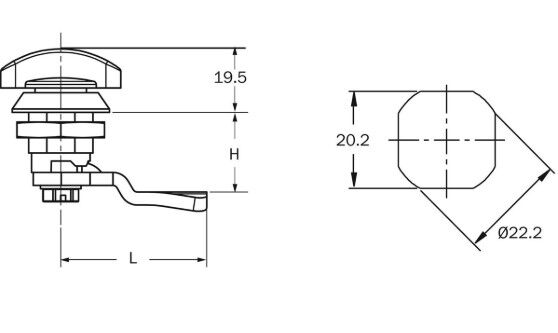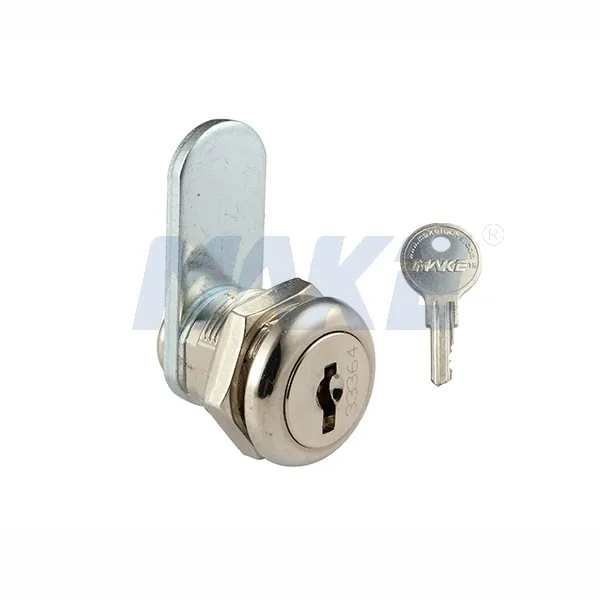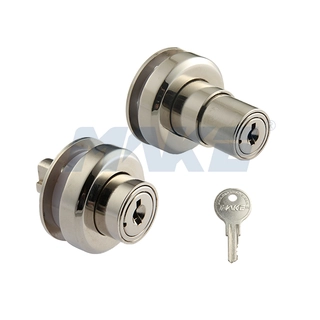Furniture lock is specialized locking mechanism designed to secure drawers, doors, and other compartments in various types of furniture, such as cabinets, desks, and lockers. These locks play a vital role in safeguarding valuable assets, sensitive documents, and personal belongings, offering both security and convenience. Whether for residential or commercial use, furniture locks come in a wide range of styles and configurations to meet different needs, from child safety and organizational purposes to ensuring restricted access to confidential contents.
Made from durable materials like brass, steel, and zinc alloys, these locks are engineered for long-lasting reliability. Our extensive range of furniture locks includes cabinet locks, drawer locks, electronic locking systems, mechanical locks, and combination locks, all offering varying security levels and keying options to cater to diverse customer requirements.
The internal mechanism of furniture locks plays a significant role in their security performance. Depending on the lock type, the mechanism can vary in complexity and resistance.
Top Locks and Slide Locks: These are relatively simple mechanisms, often sufficient for securing low-value items like display cases or storage drawers. They offer basic protection against unauthorized access but may not be adequate for securing more valuable or sensitive items.
Cassette Locks: Designed for higher security, cassette locks provide enhanced mechanical resistance, making them ideal for securing important contents. They offer a more robust internal mechanism that is resistant to tampering and forced entry.
Magnetic Locks: Magnetic locks use high-quality magnets to secure the locking mechanism. These locks are effective in preventing unauthorized access and are often used in settings such as showcases, indoor displays, or cabinet fronts. Besides security, magnetic locks also ensure a tight closure, preventing gaps and ensuring that doors or drawers are properly closed.

Furniture locks are crucial components in safeguarding the contents of drawers, cabinets, doors, and letterboxes. They come in various types, each designed to suit specific applications and provide an appropriate level of security based on the requirements. The selection of a lock often depends on its intended use, security level, and design preferences. Below is a structured overview of the various types of furniture locks, categorized by their application, shape.
Furniture locks can be categorized according to the type of furniture or item they are designed to secure.
Drawer Locks: These are commonly used to secure drawers in desks, filing cabinets, or storage units, ensuring that personal or confidential items are protected.

Cabinet Locks: Used to secure cabinets in both residential and commercial environments. They provide a higher level of security and are available in different types for different cabinet configurations.

Letterbox Locks: Specifically designed to secure letterboxes or mail slots, these locks are built to protect incoming mail and sensitive correspondence.

Furniture locks come in several shapes, each offering unique features and aesthetic appeal.
Oval (Cylindrical) Locks: This is the most common lock shape, providing a simple and secure locking mechanism. Oval locks are typically used in doors, drawers, and cabinets.
Round Locks: Round locks offer a more compact and aesthetically pleasing design, often used in furniture pieces where space and appearance are key considerations.
Square Locks: Square locks tend to offer a more robust, industrial look, and they are often used for higher security applications.
In addition to these shapes, furniture locks can also be divided into two main categories based on their interaction with a handle:
Handle Locks: These locks are integrated with a handle mechanism, making them easy to operate for authorized users.
Handleless Locks: These locks are designed for a seamless, modern look, often employed in high-end furniture or environments where aesthetics play a crucial role.
When selecting the right furniture lock for a particular application, several factors should be considered to ensure optimal security and user experience.
Determine the level of security required for the furniture being locked. For high-value items or sensitive documents, more secure options like cylinder locking cam latches are ideal. For protecting lower-value items, a simple cam lock may suffice.
Consider who will be using the lock. Personal use furniture locks should prioritize ease of use, ensuring authorized users can access contents without difficulty. In commercial or shared spaces, locks should facilitate quick and secure access for authorized personnel while maintaining restricted access to others.
Think about key management, especially if multiple locks are involved. Keyed alike systems or master key systems can simplify access control, ensuring authorized users can access multiple units with the same key or under a centralized management system.
Depending on the setting and the users, the appearance of the lock might be an important consideration. Some locks serve a purely functional purpose, while others can be decorative or blend seamlessly into the design of the furniture, particularly in office or home settings.
For locks that will see frequent use, selecting materials that can withstand wear and tear is essential. Steel, stainless steel, and zinc alloys are robust materials that offer durability and long-term performance.
1 result

